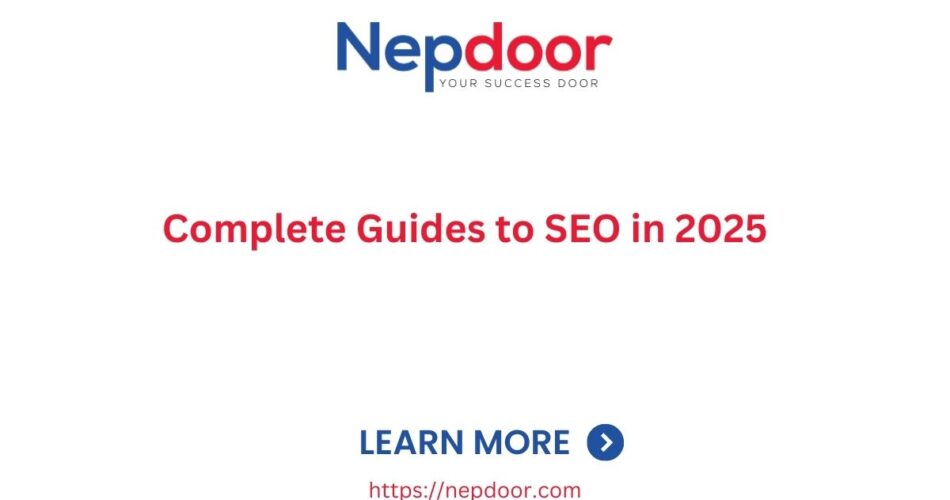Search Engine Optimization (SEO) is constantly evolving, and 2025 is no different. As search engines become smarter and user expectations grow, businesses and content creators must adapt to stay ahead. Whether you’re a beginner or an experienced digital marketer, this guide will break down SEO trends, strategies, and best practices in simple terms.
1. The Evolution of SEO
SEO has come a long way from keyword stuffing and link farms. Search engines like Google now use artificial intelligence (AI) and machine learning to understand user intent and deliver the most relevant results. Here’s what has changed over the years:
- Keyword-based SEO (Early 2000s): Focused on stuffing keywords into content.
- Content-driven SEO (2010s): Prioritized high-quality content and backlinks.
- AI-powered SEO (2020s): Emphasizes user intent, voice search, and mobile-first indexing.
- Experience-focused SEO (2025): Now prioritizes user experience (UX), trust, and engagement.
2. Core SEO Trends in 2025
2.1 AI and Search Algorithms
Google’s AI-based algorithm, RankBrain, and advancements like Google MUM (Multitask Unified Model) are making search smarter. These AI models understand:
- Natural language (how humans speak and search)
- Context (not just keywords but meaning)
- Multimedia (images, videos, and voice searches)
How to Optimize:
- Write content in natural language.
- Answer user queries directly.
- Use structured data to help AI understand your content.
2.2 Voice Search Optimization
With the rise of voice assistants (Alexa, Google Assistant, Siri), voice search is growing fast. People search differently using voice compared to text.
How to Optimize:
- Focus on conversational keywords (e.g., “How do I bake a cake?”).
- Create FAQ pages answering common questions.
- Optimize for local searches (e.g., “best coffee shop near me”).
2.3 Mobile-First Indexing
Google now primarily ranks websites based on their mobile version rather than desktop. A poor mobile experience can harm your rankings.
How to Optimize:
- Ensure your site is mobile-responsive.
- Improve page speed (use lightweight images, fast hosting).
- Use large, readable fonts and touch-friendly buttons.
2.4 User Experience (UX) and Core Web Vitals
Google’s Core Web Vitals measure:
- Loading speed (how fast your site loads)
- Interactivity (how users engage with your site)
- Visual stability (avoid content shifting when loading)
How to Optimize:
- Reduce unnecessary scripts and plugins.
- Optimize images and videos.
- Use a clean, simple website design.
2.5 E-E-A-T: Experience, Expertise, Authoritativeness, Trustworthiness
Google evaluates content quality using E-E-A-T:
- Experience: Have you personally used/tested what you’re talking about?
- Expertise: Are you a subject matter expert?
- Authoritativeness: Are you recognized as a trusted source?
- Trustworthiness: Is your site secure and credible?
How to Optimize:
- Display author bios and credentials.
- Use trusted sources and cite references.
- Get positive reviews and mentions on reputable sites.
2.6 Video SEO and Short-form Content
Video content is booming on platforms like YouTube, TikTok, and Instagram. Google now ranks video results alongside web pages.
How to Optimize:
- Use engaging thumbnails and clear titles.
- Add subtitles and transcripts.
- Optimize for YouTube SEO (tags, descriptions, watch time).
2.7 Local SEO and Google My Business (GMB)
Local searches like “best plumber near me” are increasing. Google prioritizes businesses with accurate and updated local information.
How to Optimize:
- Claim and optimize your Google My Business (GMB) profile.
- Get customer reviews and respond to them.
- Use location-specific keywords (e.g., “SEO services in New York”).
2.8 Zero-Click Searches and Featured Snippets
Many users get answers directly on Google without clicking on a website (e.g., “What is the capital of France?” shows “Paris” instantly).
How to Optimize:
- Use structured data (Schema Markup).
- Answer questions clearly in the first few sentences.
- Create listicles, tables, and bullet points to appear in snippets.
3. Technical SEO Best Practices
Even the best content won’t rank if your site has technical issues. Here’s what to focus on:
3.1 Website Speed and Performance
Google ranks faster websites higher.
How to Optimize:
- Use CDN (Content Delivery Networks).
- Minimize CSS, JavaScript, and image sizes.
- Enable lazy loading for images and videos.
3.2 Secure Websites (HTTPS)
A secure website builds trust and improves SEO.
How to Optimize:
- Use an SSL certificate (your site should start with HTTPS).
- Regularly update plugins and security patches.
3.3 Proper URL Structure
A clean URL structure helps both users and search engines.
How to Optimize:
- Use short, descriptive URLs (e.g., example.com/seo-tips instead of example.com/page?id=123).
- Avoid special characters and numbers in URLs.
4. SEO Tools and Resources
To simplify SEO, use these tools:
- Google Search Console – Track rankings and fix errors.
- Google Analytics – Monitor traffic and user behavior.
- Ahrefs / SEMrush – Analyze keywords and backlinks.
- Yoast SEO (WordPress Plugin) – Optimize on-page SEO easily.
5. Future of SEO: What’s Next?
SEO will continue to evolve with AI, augmented reality (AR) searches, and interactive search experiences. The key to success is focusing on user experience, high-quality content, and adapting to new search trends.
Conclusion
SEO in 2025 is about more than just keywords—it’s about providing value to users, optimizing for AI-driven search, and ensuring a seamless user experience. By following these best practices, you can stay ahead and rank higher in search results!
What’s Your Next Step?
- Start optimizing your site today.
- Focus on mobile-first, voice search, and AI-friendly content.
- Keep an eye on emerging trends and update your strategy accordingly.





Comments